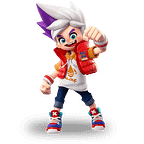Will AI Replace 2D Animators?
Animation has long been a captivating art form, bringing characters and stories to life through the magic of moving images. With advancements in technology, particularly in the field of artificial intelligence (AI), there is a growing concern among 2D animators about the potential threat to their craft. This article explores the question: Will AI replace 2D animators? Let’s delve into the topic and examine both the possibilities and limitations of AI in the animation industry.
Introduction
In recent years, AI has made significant strides across various industries, revolutionizing the way tasks are performed. Animation, being a creative domain, is also witnessing the influence of AI. However, the question remains: Will AI eventually replace 2D animators, who have been the backbone of the animation industry for decades?
Understanding AI in Animation
AI, in the context of animation, refers to the application of intelligent algorithms and machine learning techniques to automate certain aspects of the animation process. This technology can assist animators by streamlining repetitive tasks, enhancing productivity, and providing new creative possibilities.
The Rise of AI in 2D Animation
AI has been gradually integrated into the 2D animation workflow, offering tools and software that aid in character design, movement, and scene creation. These AI-driven tools analyze vast amounts of existing animation data to generate automated suggestions, making the animation process more efficient.
AI-Assisted Tools for 2D Animators
Several AI-powered tools have emerged in recent years, designed specifically for 2D animators. These tools range from automated in-betweening algorithms that generate smooth transitions between keyframes to AI-based character rigging systems that simplify the process of creating complex character movements.
The Impact of AI on the 2D Animation Industry
The advent of AI in 2D animation has both positive and negative implications. On one hand, AI can help animators save time and effort by automating repetitive tasks, enabling them to focus more on the creative aspects of animation. This can lead to increased productivity and faster turnaround times.
On the other hand, there is a concern that AI could replace human animators entirely. While AI can generate animations based on existing data, it lacks the ability to think creatively and make nuanced decisions that are essential for storytelling. Human animators possess a unique artistic touch that brings characters to life with emotions and depth.
The Role of Human Creativity
Creativity is a fundamental aspect of animation that distinguishes it as an art form. It is the human touch, the ability to infuse emotions and personality into characters, that gives animations their charm. AI may excel at generating realistic movements, but it cannot replicate the imaginative flair and storytelling capabilities of human animators.
Limitations of AI in 2D Animation
Although AI has shown remarkable progress, it still has limitations in the realm of 2D animation. AI algorithms heavily rely on existing data for training, which can result in limited diversity and the potential for biases in the generated animations. Moreover, AI lacks the intuition and improvisation that human animators bring to the table.
Future Prospects and Collaboration
Rather than viewing AI as a threat, the animation industry can embrace it as a valuable tool for collaboration. By leveraging AI’s capabilities to automate repetitive tasks and enhance productivity, animators can focus on their creative expertise. Human-AI collaboration has the potential to push the boundaries of animation, creating unique and awe-inspiring works.
Conclusion
In conclusion, while AI has made significant advancements in the field of animation, it is unlikely to completely replace 2D animators. AI serves as a powerful ally, augmenting the skills and capabilities of human animators, but it cannot replicate their creativity and artistic vision. The future of animation lies in the collaboration between humans and AI, where technology complements and enhances the unique talents of animators.
FAQs
1. Q: Can AI generate animations that evoke emotions? A: While AI can generate realistic movements, it struggles to create animations that truly evoke emotions like human animators do.
2. Q: Will AI eliminate the need for human animators? A: No, AI is more likely to assist human animators rather than replace them entirely. Human creativity and artistic vision remain invaluable in the animation industry.
3. Q: Are there any risks associated with using AI in animation? A: One of the risks is the potential for biases in AI-generated animations, as they heavily rely on existing data for training. Careful consideration is necessary to ensure fair and diverse representation.
4. Q: How can animators benefit from AI technology? A: Animators can benefit from AI by using it to automate repetitive tasks, increase productivity, and explore new creative possibilities that can enhance their work.
5. Q: What is the future of 2D animation with AI? A: The future of 2D animation lies in the collaboration between human animators and AI, where technology amplifies and complements the skills and creativity of animators.
In conclusion, the integration of AI in 2D animation should be seen as an opportunity for animators to expand their capabilities rather than a threat to their profession. By embracing AI as a collaborative tool, animators can continue to create captivating and imaginative animations that resonate with audiences worldwide.
